Petroleum Engineering|| Hey there! I’m James, and I’ve spent over a decade working as a petroleum engineer—from muddy drilling sites in Texas to high-tech offices designing carbon capture projects. When I started, I had no idea how to break into this field. Now, I want to help you avoid the mistakes I made and land your dream job. Let’s get into it!
WhatExactly Does a Petroleum Engineer Do?
Imagine you’re a detective, but instead of solving crimes, you’re figuring out how to safely pull oil and gas from miles underground. That’s basically what we do! Petroleum engineers design drills, study rock layers, and invent ways to get more energy with less environmental impact.Read More>>>
Why This Career Rocks in 2024
- Paycheck Power: I won’t lie—it’s lucrative. My first job out of college paid 85k, and now I earn over 150k. The U.S. average is $130k (BLS, 2023).
- Travel the World: I’ve worked in Canada’s oil sands and offshore rigs in Norway. If you like adventure, this job delivers.
- Save the Planet Too?: Yep! More companies need engineers to reduce emissions and work on carbon capture. My team just finished a project storing CO2 underground—it felt like superhero work.
Step 1: Nail Your Education (Without Going Broke)
I grew up in a small town and thought only Ivy Leaguers got these jobs. Wrong! Here’s what actually matters:
Pick a Degree That Opens Doors
- Best Bets: Major in petroleum engineering, mechanical engineering, or chemical engineering. I chose mechanical—it gave me flexibility.
- Top Schools (That Won’t Drain Your Wallet):
- University of Texas at Austin: Their labs have simulators that feel like video games.
- Texas A&M: They’ve got industry ties—Exxon recruits here like it’s a candy store.
- Online Option: Penn State’s World Campus lets you study while working part-time.

Classes That Actually Matter
- Drilling 101: My professor made us design a well using LEGO. Sounds silly, but I still use those principles!
- Reservoir Simulation: Think “SIM City for oil.” You’ll model underground oil flow—it’s addictively fun.
- Geology Rocks (Pun Intended): You’ll learn to read rock samples like a storybook.
Pro Tip: Take a Python coding class! I use it daily to automate reports. My buddy coded a drone to inspect rigs—now he’s the office MVP.
Step 2: Learn Skills Companies Beg For (Hint: It’s Not Just Math)
Grades matter, but employers care more about what you can do. Here’s how to stand out:
Master These Software Tools (They’re Like LinkedIn for Engineers)
- Schlumberger’s 3D modeling tool is the industry’s Photoshop. I still remember my first 3D reservoir map—it looked like a rainbow lasagna.
- Freebie Alert: Schlumberger offers free courses. I did them while binge-watching Netflix.
- Eclipse: This simulates how oil moves over 30+ years. My team used it to plan a CO2 storage site last year.
- CMG: If you want to work in Canada (hello, $$$), learn this. Their 2023 update made carbon modeling way easier.
My Hack: I practiced with YouTube tutorials from “Oilfield Basics.” The host, Dave, sounds like your cool uncle explaining football.
Don’t Forget “Soft Skills” (They’re Secretly Super Important)
- Teamwork: On my first rig, I had to convince geologists, drillers, and safety folks to work together. It was like herding cats—but now I’m pro.
- Storytelling: CEOs don’t care about porosity charts. Learn to say, “This well could power 10,000 homes for a year.”
- Adaptability: When a hurricane hit our Gulf site, I had to redesign everything in 2 days. Stressful? Yes. Rewarding? Heck yes.
Step 3: Get Dirty (literally)—Land Internships or Projects
Classrooms teach theory. Internships teach you how to survive a 12-hour shift in steel-toe boots.
How to Snag an Internship (Even With Zero Experience)
- Where to Apply:
- Big Players: Exxon, Chevron, Shell. I interned at Shell—they let me shadow a drilling crew. Pro tip: Apply early! Their 2024 deadlines close in October.
- Startups: Companies like Crusoe Energy hire interns for methane-reduction projects. Cool resume booster!
- What You’ll Do:
- Week 1: Coffee runs and Excel sheets.
- Week 4: Helping design real wells (my first is still producing oil!).
University Projects That Impress Employers
Join your school’s SPE chapter (Society of Petroleum Engineers). My team competed in PetroBowl—it’s like Jeopardy! for oil nerds. We lost badly but got noticed by a Halliburton recruiter!
Fun Story: My buddy Sarah used Minecraft to model a reservoir for a class project. She’s now a VP at Baker Hughes.
Step 4: Certifications That Make Recruiters Swipe Right
Certificates are like TikTok followers—the more legit ones you have, the more people trust you.
Must-Have Certs for 2025
- FE Exam: The “learner’s permit” of engineering. Costs $175 and proves you know the basics. I passed by grinding practice tests on Quizlet.
- PE License: After 4 years, take this to become a “Professional Engineer.” Instant credibility boost!
- Software Certs: Schlumberger’s PETREL certification got me a 20% raise. Worth every late-night study session.
Step 5: Job Hunting Hacks That Actually Work
I’ve hired interns and seen hundreds of resumes. Here’s what gets you noticed:
Where to Find Jobs (Beyond LinkedIn)
- Niche Sites: Rigzone.com is our industry’s secret job hub.
- Green Energy Roles: BP’s hiring engineers for hydrogen projects. I never thought I’d work on wind farms, but here I am!
Resume Tips from a Hiring Manager
- Keyword Magic: Use terms like “reservoir simulation” or “AI in drilling.” HR bots eat that up.
- Brag About Projects: My first resume said, “Used PETREL to boost a well’s output by 15%.” Got 5 interviews.
- Add Personality: One applicant listed “Can fix a pump in a hailstorm.” We hired him because rigs get wild.
Step 6: Never Stop Learning (Or You’ll Get Left Behind)
This industry changes faster than TikTok trends. Here’s how to stay sharp:
2025 Trends to Ride Like a Wave
- AI + Drones: We use drones to check rigs—it’s like Star Wars meets Deadliest Catch.
- Carbon Capture: My current project stores CO2 in old oil fields. It’s hot right now—learn CMG to get in.
- Geothermal Energy: Yep, oil skills work here too! I took a $99 Coursera course and now consult on geothermal wells.
Free Resources I Still Use
- SPE Webinars: Free talks (with free pizza at live events!).
- Company Training: Shell’s “Energy Transition 101” course is gold.
FAQs (From Real Students I Mentor)
Is oil dead? Should I Switch to Tech?
Not even close! The U.S. still uses 20 million barrels of oil daily. But now, we’re making it cleaner. My company’s hiring 50+ engineers this year.
I hate math. Can I Still Do This?
I barely passed calculus! Tools like PETREL do the heavy lifting. Focus on problem-solving, not equations.
What’s the Worst Part of the Job?
Missing birthdays when I’m on a rig. But I now work a 14-days-on/14-days-off schedule. Trade-off: I’ve seen every season of The Office 10 times.
Final Advice
- Network Like Crazy: SPE meetups are where I met my mentor. He’s the reason I work in carbon capture now.
- Embrace the Mess: My first day on a rig, I dropped a wrench into a well. They still tease me—but it taught me to laugh under pressure.
- Think Green: Even oil giants need eco-engineers. My biggest raise came after I learned carbon storage software.
Stuck? Comment below or DM me on LinkedIn. I answer everyone!


